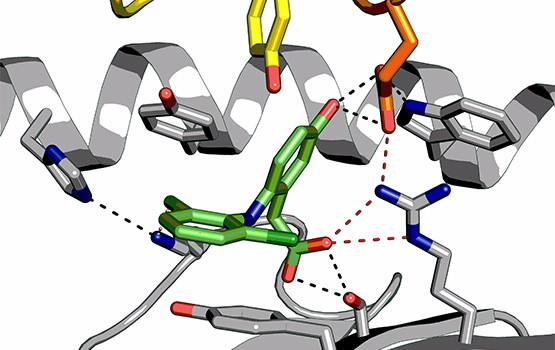

Published on the 7th February 2017 by ANSTO Staff
 |
Australian researchers used the Australian Synchrotron to bring us a step closer to understanding immune sensitivities to well-known, and commonly prescribed, medications.
Many drugs are successfully used to treat diseases, but can also have harmful side effects. While it has been known that some drugs can unpredictably impact on the functioning of the immune system, our understanding of this process has been unclear.
The team investigated what drugs might activate a specialised type of immune cell, the MAIT cell (Mucosal associated invariant T cell). They found that some drugs prevented the MAIT cells from detecting infections (their main role in our immune system), while other drugs activated the immune system, which may be undesirable.
The results, published in Nature Immunology overnight, may lead to a much better understanding of, and an explanation for, immune reactions by some people to certain kinds of drugs. The findings may also offer a way to control the actions of MAIT cells in certain illnesses for more positive patient outcomes.
The multidisciplinary team of researchers are part of the ARC Centre of Excellence in Advanced Molecular Imaging, and stem from Monash University, The University of Melbourne and The University of Queensland. Access to national research infrastructure, including the Australian Synchrotron, was instrumental to the success of this Australian research team.
Dr Andrew Keller from Monash University’s Biomedicine Discovery Institute said that T cells are an integral part of the body’s immune system.
“They protect the body by ‘checking’ other cells for signs of infection and activating the immune system when they detect an invader,” he said.
“This arrangement is dependent on both the T cells knowing what they’re looking for, and the other cells in the body giving them useful information.”
PhD student Weijun Xu from The University of Queensland’s Institute for Molecular Bioscience used computer modelling to predict chemical structures, drugs and drug-like molecules that might impact on MAIT cell function. Such small compounds included salicylates, non-steroidal anti-inflammatory drugs like diclofenac, and drug metabolites.
University of Melbourne Dr Sidonia Eckle from the Peter Doherty Institute for Infection and Immunity said the implications point to possible links between known drug hypersensitivities and MAIT cells.
“A greater understanding of the interaction between MAIT cells and other host cells will hopefully allow us to better predict and avoid therapeutics that influence and cause harm,” she said.
“It also offers the tantalising prospect of future therapies that manipulate MAIT cell behaviour, for example, by enhancing or suppressing immune responses to achieve beneficial clinical outcome.”
Media Contacts:
Media enquiries, please email media@ansto.gov.au
Monash University: Stephanie Pradier - stephanie.pradier@monash.edu
+61 4 24 568 314